-
 Bitcoin
Bitcoin $117700
-0.03% -
 Ethereum
Ethereum $3805
0.49% -
 XRP
XRP $3.098
-1.00% -
 Tether USDt
Tether USDt $1.000
0.03% -
 BNB
BNB $792.8
-1.72% -
 Solana
Solana $177.9
-1.95% -
 USDC
USDC $1.000
0.02% -
 Dogecoin
Dogecoin $0.2202
-1.55% -
 TRON
TRON $0.3278
-2.92% -
 Cardano
Cardano $0.7641
-2.43% -
 Hyperliquid
Hyperliquid $42.21
-2.68% -
 Sui
Sui $3.758
-1.58% -
 Stellar
Stellar $0.4080
-3.21% -
 Chainlink
Chainlink $17.75
-0.33% -
 Bitcoin Cash
Bitcoin Cash $591.8
4.96% -
 Hedera
Hedera $0.2561
-3.09% -
 Avalanche
Avalanche $23.34
-4.24% -
 Litecoin
Litecoin $110.7
1.96% -
 UNUS SED LEO
UNUS SED LEO $8.956
-0.01% -
 Toncoin
Toncoin $3.410
0.79% -
 Ethena USDe
Ethena USDe $1.001
0.03% -
 Shiba Inu
Shiba Inu $0.00001288
-1.82% -
 Uniswap
Uniswap $10.07
-2.06% -
 Polkadot
Polkadot $3.807
-2.27% -
 Monero
Monero $308.2
-2.15% -
 Dai
Dai $1.000
0.03% -
 Bitget Token
Bitget Token $4.521
-0.30% -
 Pepe
Pepe $0.00001134
-1.52% -
 Cronos
Cronos $0.1457
0.65% -
 Aave
Aave $274.9
-2.47%
How to use Bollinger Bands for breakout trading?
Bollinger Bands identify breakouts through the "squeeze" — when bands narrow, signaling low volatility and a potential strong move upon breakout, confirmed by volume and candle close beyond the band.
Jul 30, 2025 at 10:27 pm
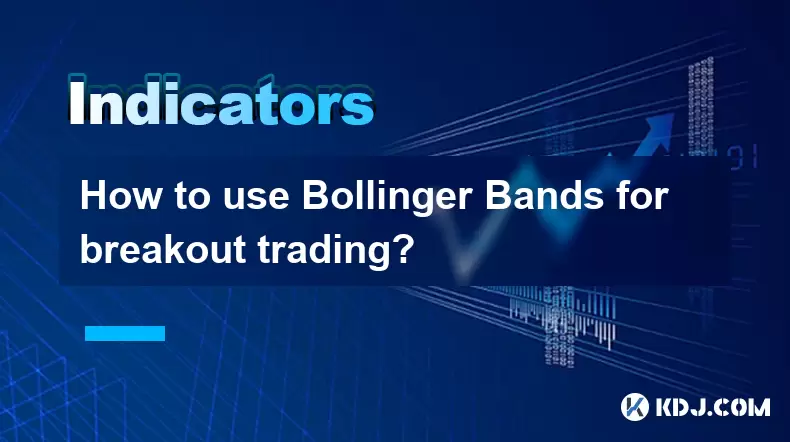
Understanding Bollinger Bands and Their Components
Bollinger Bands are a widely used technical analysis tool developed by John Bollinger in the 1980s. They consist of three lines plotted on a price chart: the middle band, which is typically a 20-period simple moving average (SMA); the upper band, calculated by adding two standard deviations to the middle band; and the lower band, derived by subtracting two standard deviations from the middle band. These bands dynamically adjust to market volatility—expanding during periods of high volatility and contracting during low volatility. This adaptability makes them particularly useful for identifying potential breakout opportunities.
The standard deviation multiplier is usually set at 2, but traders can adjust it based on their strategy and market conditions. A higher multiplier creates wider bands, reducing the frequency of price touching the bands, while a lower multiplier results in tighter bands, increasing sensitivity. The core idea behind using Bollinger Bands for breakout trading is that when price moves beyond the upper or lower band, it may signal the beginning of a strong directional move—either upward or downward—especially after a period of consolidation.
Identifying Consolidation Before a Breakout
One of the most critical aspects of breakout trading with Bollinger Bands is recognizing periods of consolidation. During consolidation, price moves within a narrow range, and the Bollinger Bands visibly contract. This phenomenon is often referred to as the “Bollinger Band Squeeze.” A squeeze indicates low volatility and often precedes a significant price movement. Traders monitor the distance between the upper and lower bands—when they come closer together, it suggests that a breakout may be imminent.
To visually identify a squeeze:
- Observe the bandwidth, which is the difference between the upper and lower bands.
- Look for a noticeable narrowing of the bands over several consecutive periods.
- Confirm with volume analysis—declining volume during the squeeze often supports the idea of market indecision.
- Use additional indicators like the Average True Range (ATR) to confirm decreasing volatility.
The tighter the squeeze, the more powerful the potential breakout, as pent-up energy in the market is released once price breaks out of the narrow range.
Confirming the Breakout Direction and Validity
A price move outside the Bollinger Bands does not automatically confirm a valid breakout. Traders must apply additional filters to avoid false signals. A true breakout occurs when price closes beyond the upper or lower band and sustains that move over the next few candles. A single candle wick poking outside the band is not sufficient.
To confirm a breakout:
- Wait for a candle close outside the band, not just an intraday spike.
- Check for increasing volume accompanying the breakout candle, which validates the strength of the move.
- Use a secondary confirmation tool such as the Relative Strength Index (RSI) or Moving Average Convergence Divergence (MACD) to assess momentum.
- Consider the broader trend—breakouts in the direction of the prevailing trend tend to have higher success rates.
For example, if the overall trend is bullish and price breaks above the upper Bollinger Band on high volume with RSI above 50, the breakout is more likely to continue. Conversely, a bearish breakout below the lower band with RSI below 50 and strong downward momentum adds credibility.
Executing the Trade: Entry, Stop-Loss, and Take-Profit
Once a breakout is confirmed, the next step is to execute the trade with proper risk management. The entry point depends on the trader’s preference for aggressiveness or caution.
For a bullish breakout:
- Enter long when price closes above the upper band.
- Alternatively, wait for a retest of the upper band (now acting as support) before entering.
- Place a stop-loss just below the recent swing low or below the breakout candle’s low.
- Set a take-profit level based on recent resistance zones or use a risk-reward ratio of at least 1:2.
For a bearish breakout:
- Enter short when price closes below the lower band.
- Wait for a retest of the lower band (now acting as resistance) for a higher probability entry.
- Position a stop-loss above the recent swing high or above the breakout candle’s high.
- Target previous support levels or apply a fixed risk-reward ratio.
Using a trailing stop can help lock in profits as the trend progresses, especially in strong momentum moves.
Common Pitfalls and How to Avoid Them
Breakout trading with Bollinger Bands is not without risks. One of the most common issues is false breakouts, where price briefly moves outside the bands but quickly reverses. This often happens during news events or low-liquidity periods. To reduce exposure:
- Avoid trading breakouts during major news releases unless part of a specific news-trading strategy.
- Require multiple confirmation signals before entering.
- Use longer timeframes (e.g., 1-hour or 4-hour charts) to filter out market noise.
Another mistake is overtrading during high volatility. When bands are wide, price often whipsaws, leading to losses if entries are based solely on band touches. Instead, focus on the squeeze setup rather than random band touches.
Lastly, failing to adjust settings for different assets can lead to poor results. Cryptocurrencies like Bitcoin or Ethereum may require different standard deviation multipliers or moving average periods compared to traditional stocks.
Integrating Bollinger Bands with Other Indicators
For enhanced accuracy, Bollinger Bands should not be used in isolation. Combining them with other technical tools improves signal reliability.
Effective combinations include:
- Volume indicators like On-Balance Volume (OBV) to confirm breakout strength.
- Trend-following indicators such as the 50-period and 200-period moving averages to align trades with the dominant trend.
- Oscillators like Stochastic or RSI to detect overbought or oversold conditions that may precede reversals after a breakout.
For instance, a breakout above the upper band with rising OBV and price above the 200-period SMA increases the probability of a sustained upward move.
Frequently Asked Questions
Can Bollinger Bands be used on all cryptocurrency timeframes?
Yes, Bollinger Bands can be applied to any timeframe, from 1-minute to weekly charts. However, the reliability of breakout signals increases on higher timeframes due to reduced noise and stronger confirmation of trends.
What should I do if price re-enters the bands immediately after a breakout?
This may indicate a false breakout. Exit the trade if the reversal is accompanied by decreasing volume and conflicting signals from other indicators. Reassess the setup before re-entering.
Is the default 20-period and 2-standard deviation setting optimal for crypto trading?
Not always. Cryptocurrencies exhibit higher volatility. Some traders adjust to a 14-period SMA with a 2.5 standard deviation to better capture extreme moves while reducing false signals.
How do I distinguish between a breakout and a band rejection?
A breakout involves a sustained close outside the band with follow-through momentum. A band rejection occurs when price touches the band and reverses within the same or next candle, often seen during ranging markets.
Disclaimer:info@kdj.com
The information provided is not trading advice. kdj.com does not assume any responsibility for any investments made based on the information provided in this article. Cryptocurrencies are highly volatile and it is highly recommended that you invest with caution after thorough research!
If you believe that the content used on this website infringes your copyright, please contact us immediately (info@kdj.com) and we will delete it promptly.
- Bitcoin, Penguins, and Meme Coins: A Wild Ride in Crypto Town
- 2025-07-31 16:30:14
- Whale Movement and Altcoins: Buying Pressure Heats Up!
- 2025-07-31 16:30:14
- Pi Network's Price Crash: A Crypto Disappointment or a Buying Opportunity?
- 2025-07-31 17:10:12
- Ether Machine's ETH Accumulation: A New York Minute on Corporate Crypto Strategies
- 2025-07-31 17:10:12
- Bitcoin Price on the Edge: Trendline Break or Breakdown?
- 2025-07-31 17:50:12
- Dogecoin, Investors, and Ozak AI: A New Era of Crypto Investments?
- 2025-07-31 17:50:12
Related knowledge
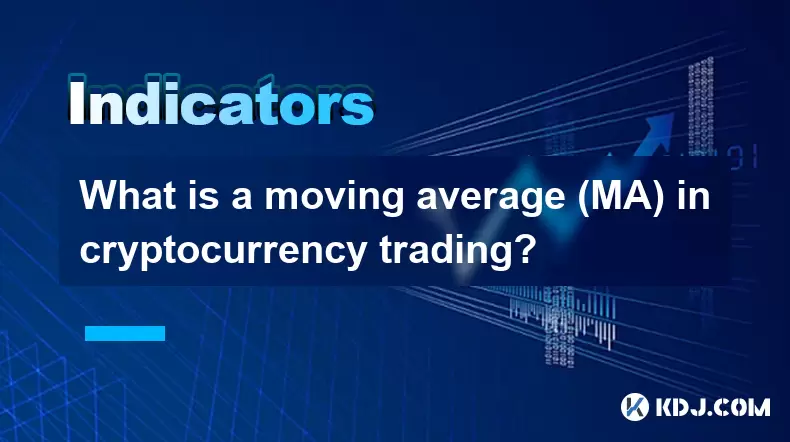
What is a moving average (MA) in cryptocurrency trading?
Jul 31,2025 at 06:30pm
Understanding the Concept of Moving Average (MA)A moving average (MA) is a widely used technical analysis tool in cryptocurrency trading that helps sm...
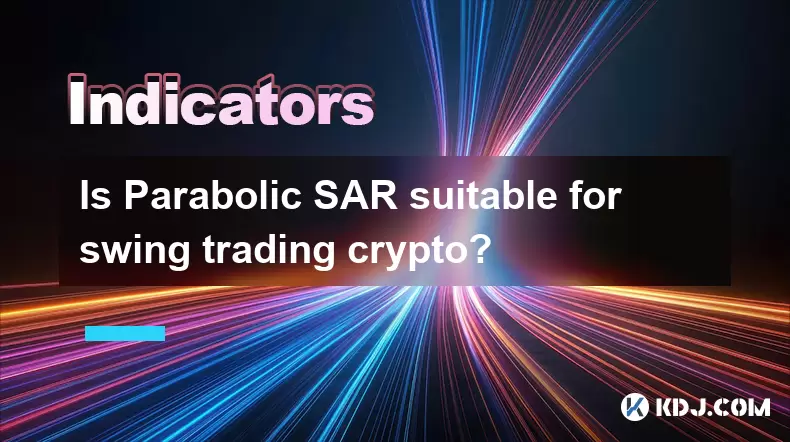
Is Parabolic SAR suitable for swing trading crypto?
Jul 31,2025 at 05:29pm
Understanding Parabolic SAR in Cryptocurrency TradingThe Parabolic SAR (Stop and Reverse) is a technical indicator developed by J. Welles Wilder that ...
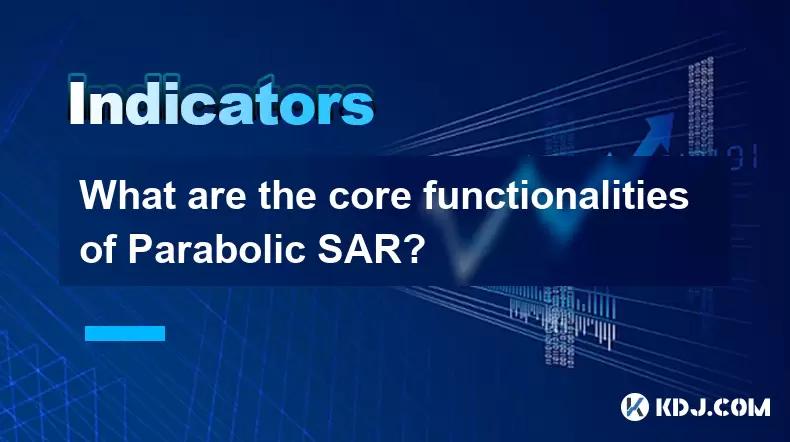
What are the core functionalities of Parabolic SAR?
Jul 31,2025 at 04:57pm
Understanding the Parabolic SAR IndicatorThe Parabolic SAR (Stop and Reverse) is a technical analysis tool developed by J. Welles Wilder Jr. It is pri...
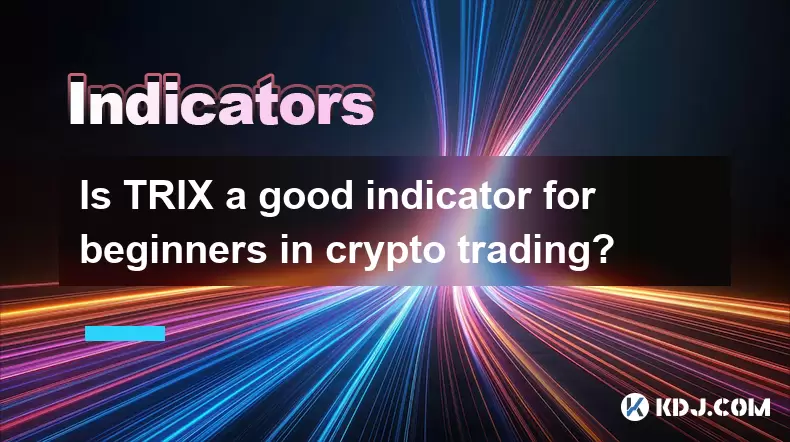
Is TRIX a good indicator for beginners in crypto trading?
Jul 31,2025 at 06:16pm
Understanding the TRIX Indicator in Cryptocurrency TradingThe TRIX (Triple Exponential Average) indicator is a momentum oscillator designed to filter ...
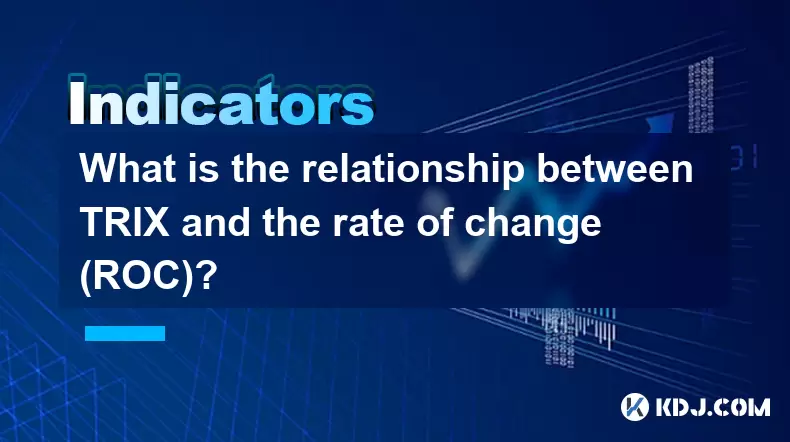
What is the relationship between TRIX and the rate of change (ROC)?
Jul 31,2025 at 03:14pm
Understanding TRIX and Its Core MechanismTRIX, or the Triple Exponential Average, is a momentum oscillator used in technical analysis to identify over...
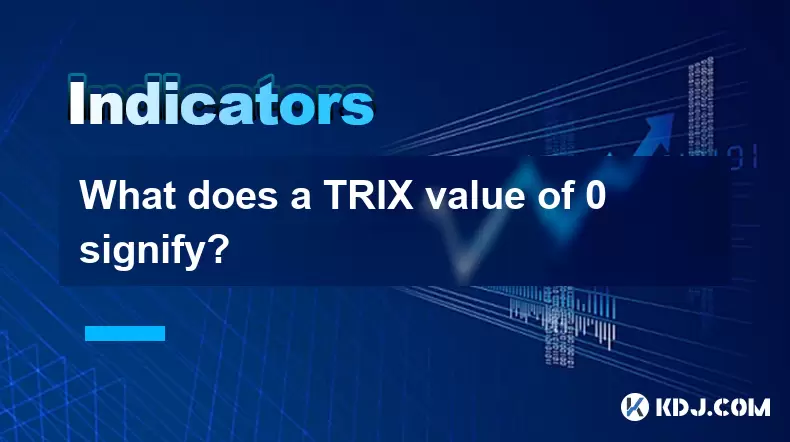
What does a TRIX value of 0 signify?
Jul 31,2025 at 02:21pm
Understanding the TRIX Indicator in Cryptocurrency TradingThe TRIX (Triple Exponential Average) indicator is a momentum oscillator used in technical a...

What is a moving average (MA) in cryptocurrency trading?
Jul 31,2025 at 06:30pm
Understanding the Concept of Moving Average (MA)A moving average (MA) is a widely used technical analysis tool in cryptocurrency trading that helps sm...

Is Parabolic SAR suitable for swing trading crypto?
Jul 31,2025 at 05:29pm
Understanding Parabolic SAR in Cryptocurrency TradingThe Parabolic SAR (Stop and Reverse) is a technical indicator developed by J. Welles Wilder that ...

What are the core functionalities of Parabolic SAR?
Jul 31,2025 at 04:57pm
Understanding the Parabolic SAR IndicatorThe Parabolic SAR (Stop and Reverse) is a technical analysis tool developed by J. Welles Wilder Jr. It is pri...

Is TRIX a good indicator for beginners in crypto trading?
Jul 31,2025 at 06:16pm
Understanding the TRIX Indicator in Cryptocurrency TradingThe TRIX (Triple Exponential Average) indicator is a momentum oscillator designed to filter ...

What is the relationship between TRIX and the rate of change (ROC)?
Jul 31,2025 at 03:14pm
Understanding TRIX and Its Core MechanismTRIX, or the Triple Exponential Average, is a momentum oscillator used in technical analysis to identify over...

What does a TRIX value of 0 signify?
Jul 31,2025 at 02:21pm
Understanding the TRIX Indicator in Cryptocurrency TradingThe TRIX (Triple Exponential Average) indicator is a momentum oscillator used in technical a...
See all articles

























































































